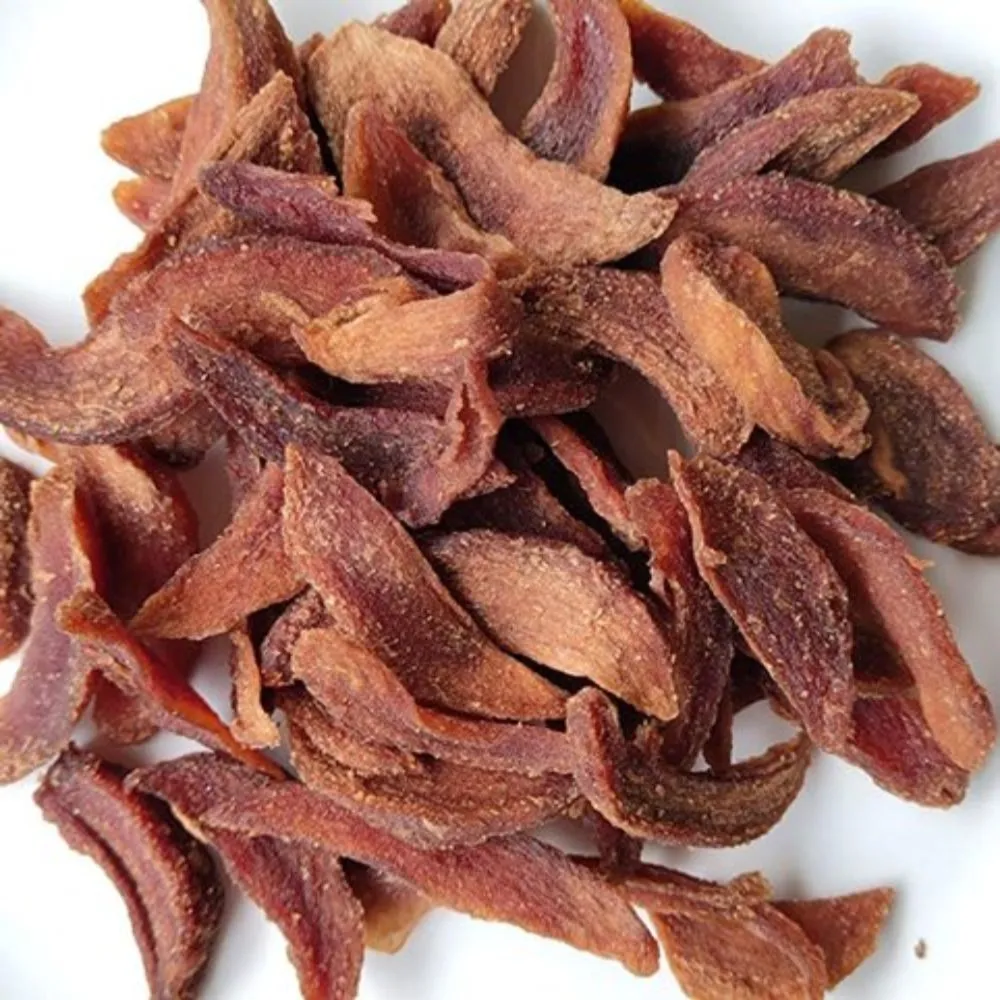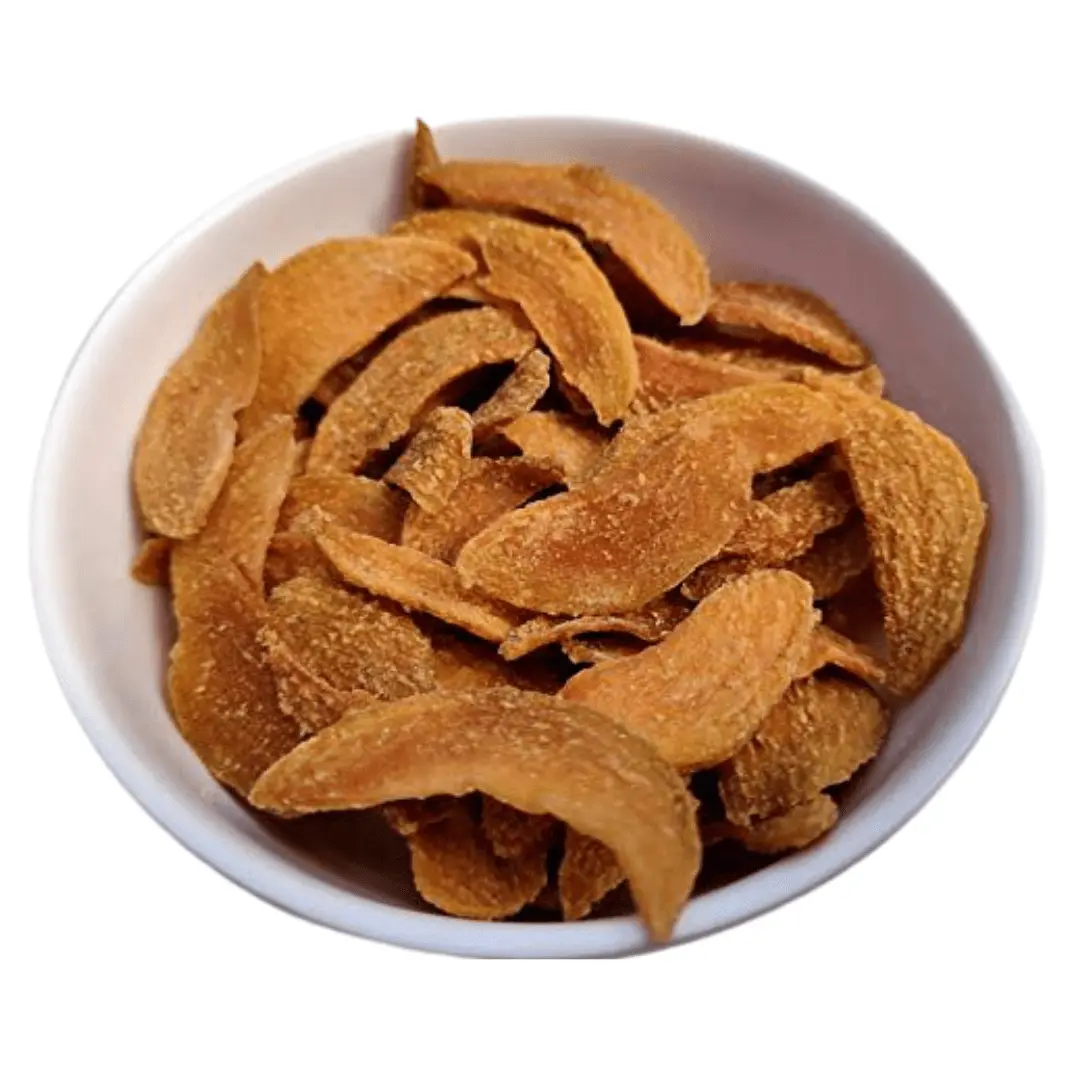|
User Role
|
Min/Max Order Quantity
|
|---|---|
|
Distributor
|
50-100
|
|
Retailer
|
100-150
|

Dehydrated sapota, also known as chikoo or sapodilla, is a fruit that undergoes a dehydration process to remove most of its moisture content. This results in a chewy and concentrated snack that retains much of the flavor and nutritional benefits of fresh sapota. Let’s explore the various aspects of dehydrated sapota:
Taste and Look: The sapota is a tropical fruit with delicious, sweet flesh behind a tough, brown exterior. Sapota keeps its distinct flavor when dehydrated, which is sometimes described as a fusion of pear, caramel, and brown sugar. By concentrating the fruit’s inherent sugars, the dehydration process makes the fruit sweeter and gives it a chewier texture.
Nutritional Advantages: Dehydrated sweet potatoes have a number of advantages.
- Minerals and vitamins: Potassium, calcium, iron, and vitamins A, C, and E are all abundant in sapota. These nutrients promote bone health, immunological response, and general health.
- Dietary fiber: Sapota that has been dehydrated is a good source of this fiber, which facilitates satiety, aids in digestion, and helps control blood sugar levels.
- Antioxidants: Vitamin C and flavonoids, two antioxidants found in spinach, help shield cells from oxidative damage and lower the risk of chronic illnesses.
- Long Shelf Life: Dehydrated sapota is more convenient to store and transport because it has a longer shelf life than fresh fruit. It can last for several months to a year when stored properly in an airtight container.
- Portability: Dehydrated sapota is a small, light snack that is perfect for eating on the go. It’s convenient to carry when traveling or engaging in outdoor activities, as well as to fit into lunchboxes and backpacks.
- Versatility: There are several ways to eat dehydrated sapota. On its own, it provides a sweet and chewy pleasure and is a tasty and healthy snack. It can also be an ingredient in recipes for baked goods, granola, and energy bars.



